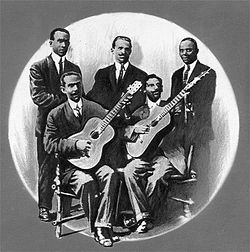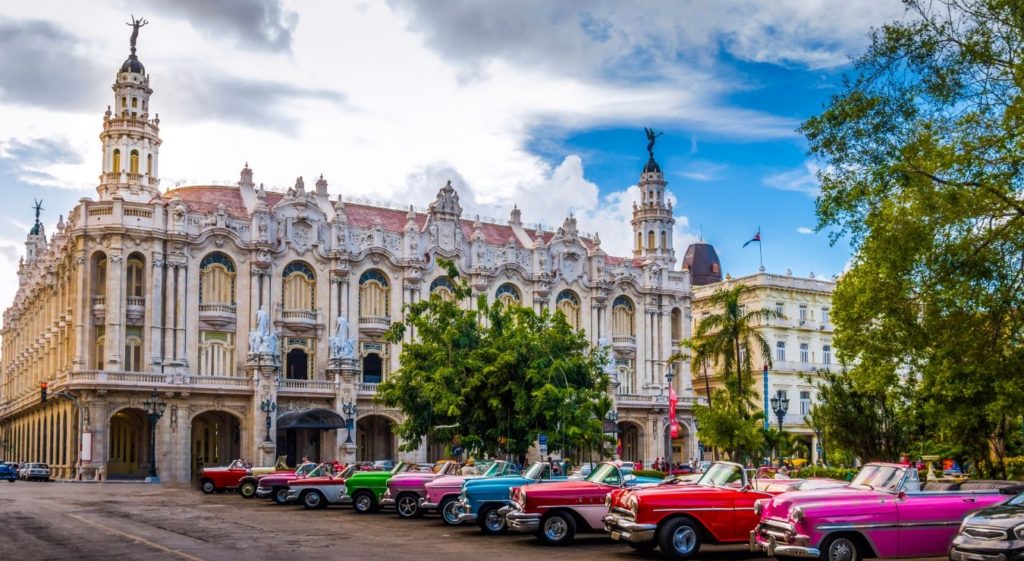EL BOLERO, UN GENERO MUSICAL QUE RECORRE EL MUNDO, ES ETERNAMENTE CUBANO. VIDEOS.
El Bolero cubano fue quizás la primera gran síntesis musical y vocal en ganar el reconocimiento universal. Esta música de baile se extendió a otros países, dejando atrás lo que Ed Morales ha llamado “la tradición lírica más popular en América Latina”.
El primer bolero habría sido escrito por el sastre cubano José Viviano Sánchez (Pepe Sánchez), creador de “Tristezas” compuesto en 1883 y devenido padre de un género que rápidamente trascendió al hermano país mexicano a través de Yucatán; más tarde invadió Latinoamérica hasta hacerse universal.
COMIENZOS DE SU INTERPRETACION.
A principios del siglo XX el bolero sólo era interpretado con guitarra, pero pronto se acompañó con trompeta, flauta y violín. En 1911 nació “Quiéreme mucho” del compositor y director de orquesta cubano Gonzalo Roig, quien marcó la pauta del género. Sin embargo, no se hizo esperar que México fuese caja de resonancia de este con figuras de la talla del legendario músico Agustín Lara, y los tríos Los Panchos y Los Tres Ases además del tenor continental Pedro Vargas.
Pepe Sánchez nació en Santiago de Cuba el 19 de marzo de 1856 y, en la misma casa donde dio sus primeros pasos, sirvió de anfitrión de
una peña en la cual realizó tertulias de buena música criolla y se desempeñó conjuntamente con el oficio de sastre y de actividades
conspirativas en contra del yugo colonial español.
Su casa era frecuentada por trascendentales personalidades de la gesta emancipadora cubana ente ellas Antonio y José Maceo, Quintín Banderas y Guillermón Moncada. Sánchez estaba casado con Elvira Calleja y tuvo varios hijos, algunos de los cuales también se dedicaron a la música.
“Tristeza” Interpretada por Los Tres Soles.
Así, su hogar se convirtió en un centro artístico de primer orden y solía ser parada y fonda de músicos de renombre, entre ellos el compositor habanero Jorge Ankerman –veinte años más joven que Pepe–, y de Claudio José Brindis de Salas, un cubano que pasaba por ser el mejor violinista del momento, en el ámbito latinoamericano.
Con el tiempo y gracias a la pieza “Tristeza”, Pepe Sánchez es considerado el Padre del Bolero latinoamericano. La melodía está comprendida por dos períodos musicales de 16 compases cada uno, separados por un pasaje instrumental que se ejecutaba en la guitarra, al que le llamaban pasacalle.
“Tristeza me dan tus penas mujer profundo dolor, no dudes de mí
no hay pena de amor que entrever cuanto sufro y padezco por ti.
La suerte es adversa conmigo no deja ensanchar mi pasión un beso
me diste un día lo guardo en el corazón.”
COSECHA MUSICAL DE PEPE SANCHEZ.
De su cosecha creadora destacan además: “Me entristeces, mujer” (popularmente conocida con el nombre de “Tristeza”), “Pobre artista”,
“Elvira”, “Cuando la expresión de tu canto”, “Cuba, mi patria querida”, “Caridad”, “Adán y Eva”, “Esperanza”, “Redondilla, “Ángeles”, “Naturaleza” e “Himno a Maceo”.
Vicentico Valdes Canta Boleros.
El Padre del Bolero también fundó y dirigió el famoso Quinteto de Trovadores Santiagueros, con el cual consolido su fama, integrado por
Pepe Figarola (primera voz), Bernabé Ferrer y Luís Felipe Portés (segundas voces), Emiliano Blez (guitarrista acompañante) y él (primera guitarra). Fue además, maestro de relevantes músicos cubanos, entre ellos, Sindo Garay, en manos de quien puso por vez primera una guitarra, y de Miguel Matamoros, el guía del famoso Trío Matamoros.
Sánchez suplió con una gran sensibilidad, la falta de estudios musicales con el auto-estudio y la intuición, por ello muchas de sus
canciones de finales del siglo XIX y principios del XX no fueron transcritas, pero trascendieron hasta hoy rescatadas por sus alumnos y
admiradores.
Legó al patrimonio musical de la Mayor de las Antillas, Latinoamérica y el mundo una extensa obra, nutrida por guarachas, himnos, sones y
otras composiciones envueltas de un fino vocabulario escogido, y con su voz de barítono imprimió un sello de Cubanía y autenticidad acompañado siempre de su inseparable guitarra que tocaba con maestría.
El Padre del Bolero enfermó y murió el tres de enero de 1918 a la edad de 62 años.
El Bolero, por su autenticidad autoral y su historia dentro de la música popular de este continente y, en especial de esta gran Antilla siempre será un género eternamente cubano.
EL BOLERO, A MUSICAL GENRE THAT GOES AROUND THE WORLD, IS ETERNALLY CUBAN.
The Cuban Bolero was perhaps the first great musical and vocal synthesis to gain universal recognition. This dance music spread to other countries, leaving behind what Ed Morales has called “the most popular lyrical tradition in Latin America”.
The first bolero would have been written by the Cuban tailor José Viviano Sánchez (Pepe Sánchez), creator of “Tristezas” composed in 1883 and become the father of a genre that quickly transcended the Mexican brother country through Yucatan; later it invaded Latin America until it became universal.
At the beginning of the 20th century, the bolero was only performed with a guitar, but it was soon accompanied by a trumpet, flute, and violin. In 1911 “Quiéreme mucho” was born from the Cuban composer and conductor Gonzalo Roig, who set the tone for the genre. However, Mexico was not expected to be a sounding board for this with figures such as the legendary musician Agustín Lara, and the trios Los Panchos and Los Tres Ases in addition to continental tenor Pedro Vargas.
Pepe Sánchez was born in Santiago de Cuba on March 19, 1856, and, in the same house where he took his first steps, he served as host of
a rock in which he made gatherings of good Creole music and worked jointly with the trade of tailor and activities
conspiracies against the Spanish colonial yoke.
His house was frequented by transcendental personalities of the Cuban emancipatory deed, among them Antonio and José Maceo, Quintín Banderas, and Guillermón Moncada. Sánchez was married to Elvira Calleja and had several children, some of whom also dedicated themselves to music.
Thus, his home became an artistic center of the first order and used to be a stop and inn for renowned musicians, among them the Cuban composer Jorge Ankerman – twenty years younger than Pepe -, and Claudio José Brindis de Salas, a Cuban who happened to be the best violinist of the moment, in the Latin American sphere.
Over time and thanks to the piece “Tristeza”, Pepe Sánchez is considered the Father of the Latin American Bolero. The melody is comprised of two musical periods of 16 bars each, separated by an instrumental passage that was played on the guitar, which they called a parade.
“Sadness gives me your sorrows woman deep pain, do not doubt me
There is no pain of love to glimpse how much I suffer and suffer for you.
Luck is adverse to me a kiss does not let my passion widen
you gave me one day I keep it in my heart. ”
MUSICAL HARVEST OF PEPE SANCHEZ.
Of his creative vintage, the following stand out: “You sadden me, woman” (popularly known as “Sadness”), “Poor artist”,.
“Elvira”, “When the expression of your song”, “Cuba, my beloved homeland”, “Caridad”, “Adán y Eva”, “Esperanza”, “Redondilla,” Ángeles “,” Naturaleza “and” Himno a Maceo ”
Padre del Bolero also founded and directed the famous Santiagueros Quintet of Troubadours, with which he consolidated his fame, made up of
Pepe Figarola (first voice), Bernabé Ferrer and Luís Felipe Portés (second voices), Emiliano Blez (accompanying guitarist), and him (first guitar). He was also a teacher of relevant Cuban musicians, among them, Sindo Garay, in the hands of whom put a guitar for the first time, and of Miguel Matamoros, the guide of the famous Trío Matamoros.
Sánchez supplied with great sensitivity, the lack of musical studies with self-study and intuition, which is why many of his
songs of the late nineteenth and early twentieth centuries were not transcribed but transcended to this day rescued by their students and
admirers.
He bequeathed to the musical heritage of the Greater Antilles, Latin America and the world an extensive work, nurtured by guarachas, hymns, sounds and
other compositions wrapped in a finely chosen vocabulary, and with his baritone voice, he imprinted a stamp of Cubanía and authenticity, always accompanied by his inseparable guitar, which he played with mastery.
Padre del Bolero fell ill and died on January 3, 1918, at the age of 62.
El Bolero, for its author authenticity and its history within the popular music of this continent and, especially of this great Antilla, will always be an eternally Cuban genre.
Agencies/ RHC/ Guadalupe Yaujar/ Pedro M. Otero/ Extractos/ Excerpts/ Internet Photos/ YouTube/ Arnoldo Varona/ www.TheCubanHistory.com
THE CUBAN HISTORY, HOLLYWOOD.












